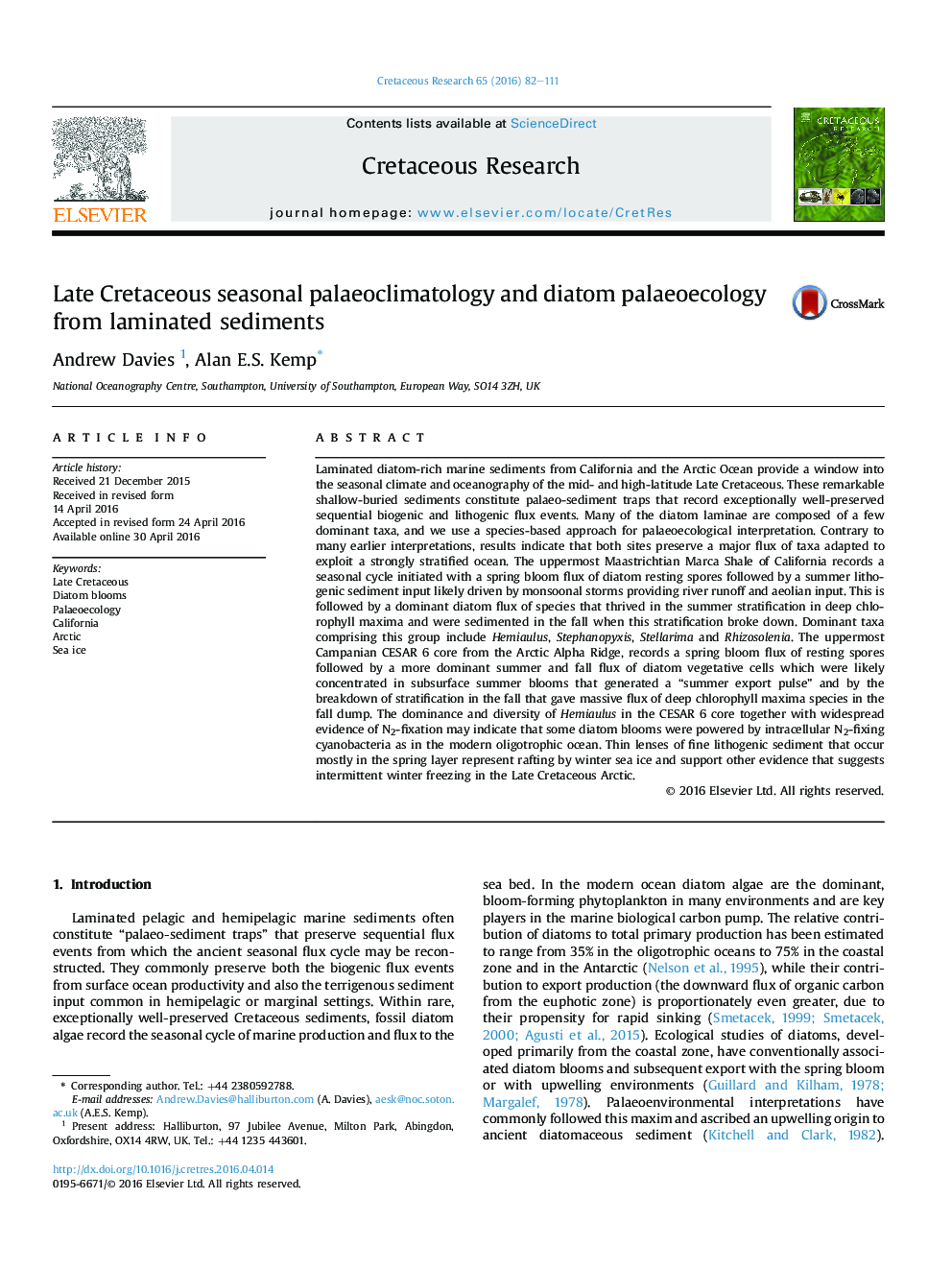| کد مقاله | کد نشریه | سال انتشار | مقاله انگلیسی | نسخه تمام متن |
|---|---|---|---|---|
| 6448164 | 1642058 | 2016 | 30 صفحه PDF | دانلود رایگان |
عنوان انگلیسی مقاله ISI
Late Cretaceous seasonal palaeoclimatology and diatom palaeoecology from laminated sediments
ترجمه فارسی عنوان
پائئوسیمیتولوژی فصلی کرتاسه و پالئوسکوئید دیاتومیک از رسوبات روکش
دانلود مقاله + سفارش ترجمه
دانلود مقاله ISI انگلیسی
رایگان برای ایرانیان
کلمات کلیدی
کرتاسه بعدی شکوفه دیتومات، پالایئوکولوژی، کالیفرنیا، قطب شمال، یخ دریایی،
موضوعات مرتبط
مهندسی و علوم پایه
علوم زمین و سیارات
فسیل شناسی
چکیده انگلیسی
Laminated diatom-rich marine sediments from California and the Arctic Ocean provide a window into the seasonal climate and oceanography of the mid- and high-latitude Late Cretaceous. These remarkable shallow-buried sediments constitute palaeo-sediment traps that record exceptionally well-preserved sequential biogenic and lithogenic flux events. Many of the diatom laminae are composed of a few dominant taxa, and we use a species-based approach for palaeoecological interpretation. Contrary to many earlier interpretations, results indicate that both sites preserve a major flux of taxa adapted to exploit a strongly stratified ocean. The uppermost Maastrichtian Marca Shale of California records a seasonal cycle initiated with a spring bloom flux of diatom resting spores followed by a summer lithogenic sediment input likely driven by monsoonal storms providing river runoff and aeolian input. This is followed by a dominant diatom flux of species that thrived in the summer stratification in deep chlorophyll maxima and were sedimented in the fall when this stratification broke down. Dominant taxa comprising this group include Hemiaulus, Stephanopyxis, Stellarima and Rhizosolenia. The uppermost Campanian CESAR 6 core from the Arctic Alpha Ridge, records a spring bloom flux of resting spores followed by a more dominant summer and fall flux of diatom vegetative cells which were likely concentrated in subsurface summer blooms that generated a “summer export pulse” and by the breakdown of stratification in the fall that gave massive flux of deep chlorophyll maxima species in the fall dump. The dominance and diversity of Hemiaulus in the CESAR 6 core together with widespread evidence of N2-fixation may indicate that some diatom blooms were powered by intracellular N2-fixing cyanobacteria as in the modern oligotrophic ocean. Thin lenses of fine lithogenic sediment that occur mostly in the spring layer represent rafting by winter sea ice and support other evidence that suggests intermittent winter freezing in the Late Cretaceous Arctic.
ناشر
Database: Elsevier - ScienceDirect (ساینس دایرکت)
Journal: Cretaceous Research - Volume 65, October 2016, Pages 82-111
Journal: Cretaceous Research - Volume 65, October 2016, Pages 82-111
نویسندگان
Andrew Davies, Alan E.S. Kemp,
